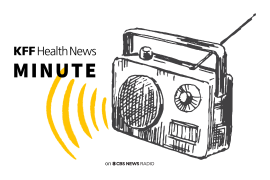America’s Uninsured Numbers Hold Fairly Steady, While Geographical Disparity Remains Stark
In south central states, nearly a quarter of adults lack insurance. In other health law news, Republicans are hopeful that they have another chance at repeal following the death of Sen. John McCain (R-Ariz.), and the Trump administration pays New York and Minnesota money to help stabilize their marketplaces.
Bloomberg:
Fewer Americans Without Health Insurance Since Obamacare Debut
Fewer Americans lack health insurance -- but the gap remains wide, especially in some pro-Trump states. The number of uninsured declined to 28.3 million in the first quarter, down from 29.3 last year -- and 48.6 million in 2010, the year the Affordable Care Act was signed into law by then-President Barack Obama, according to data from the federal Centers for Disease Control and Prevention.(Tanzi, 8/29)
The Hill:
GOP Eyes Another Shot At ObamaCare Repeal After McCain’s Death
Senate Republicans say they would like Arizona Gov. Doug Ducey (R) to appoint a successor to late Sen. John McCain (R-Ariz.) who, unlike McCain, would support GOP legislation to repeal ObamaCare. GOP lawmakers say they won’t have time to hold another vote to repeal the law in 2018 but vow to try again next year if they manage to keep their Senate and House majorities. (Bolton, 8/29)
The Washington Post:
Trump Administration To Pay New York, Minnesota For Lost Health-Care Funds
The Trump administration will pay New York and Minnesota close to half a billion dollars this year after the two states sued over lost federal funding for programs that provide health care to tens of thousands of low-income residents. The two states are the only ones in the country to create “Basic Health Programs,” an option for states created by the Affordable Care Act. Under such programs, people earning between 138 percent and 200 percent of the federal poverty level -- the population earning slightly too much to be eligible for Medicaid -- receive their health coverage from the state. That is about 738,000 people in New York and 84,000 people in Minnesota. (Itkowitz, 8/28)






